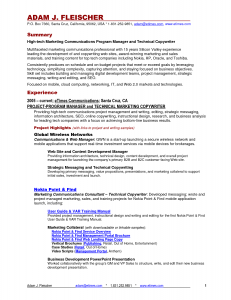Everything is a competition. In life, everything we do, whether that’s parking a car, deciding what TV show to watch, or applying for a job, results in a winner and a loser. Some of these acts are more clearly competitive than the others, but perhaps none so much as the act of applying for a job.
When we seek to secure a new position, regardless of the nature of the company or organization we are applying to, we are fully aware that we are going to be pitted against others, all of us vying for one, singular position. This begs the question, what can we do to stand out against the crowd? How do we make our knowledge and experience more appealing than our competitors? How do we leave a positive, lasting impression on our potential employer after we leave the interview? The answer is simple: our résumé.
A carefully crafted résumé can be the single most effective tool in landing that dream job, but also in ruining our chances. This is where the alternative résumé debate begins. A traditional résumé—one that merely lists our qualifications and experiences—is arguably going out of style. Instead, employees are becoming more inclined to favor job candidates that find alternative ways to showcase the same information.
An alternative résumé gives an applicant more control over their professional presence and personal representation, which can allow the individual to present an image of themselves that distinguishes them from others with a similar background.
With a nontraditional résumé comes freedom from the conventions and restraints generally associated with building a résumé, and this can help one applicant distinguish themselves above others. When strategically and carefully constructed in a memorable and professional capacity, it becomes an opportunity for the applicant to showcase not only their credentials, but to provide a practical demonstration of them, too. If the applicant is pursuing a job in a creative industry, such as I will inevitably do, this opportunity is unfathomably valuable.
Take, for example, the following traditional résumé for copywriter Adam J. Fleischer.
While Fleischer’s information is presented in a neat and precise manner, his résumé is nondescript, dull, and easily forgotten. On the other hand, the following nontraditional résumé for Ariane Denise, also a copywriter, leaves a lasting impression.
Denise’s résumé adheres to the basic principles of information design that are expected from any job applicant: all of the necessary bona fides are present, but they are not just merely present; they are striking and impressive. The layout of her résumé is a direct representation of the job she is undoubtedly applying for, and her dedication to the craft. In our current job market—overcrowded with highly qualified applicants but lacking available positions—this type of résumé lends a much needed competitive edge.
WORKS CITED:
AdamFleisher. “Technical Marketing Copywriter in San Francisco Bay Area CA Resume Adam Fleischer.” Mixed Media. Docstoc. 23 Dec. 2009. Web. 11 Sept. 2014.
arianedenise. “MY RESUME.” Mixed Media. deviantART. 29 June 2009. Web. 11 Sept. 2014.


Your blog post gives great detailed information on nontraditional resumes. (What field of study are you pursuing?) Based on my degree, I have to be creative with my resume and online bases. I have four resumes listed online and two on paper. The four online are based on personal website, LinkedIn, and Twitter. The reason I said four is because I have two listed on my website. One is for part time jobs and the other is for career based. Like you said, it depends on a lasting impression. I totally believe that concept. When you making a lasting impression on an employer, they would most likely remember your name plus resume. Great job on your post!!!